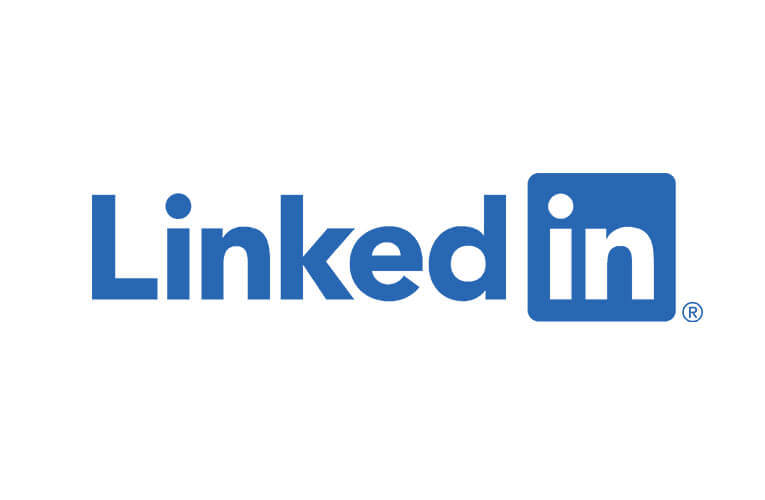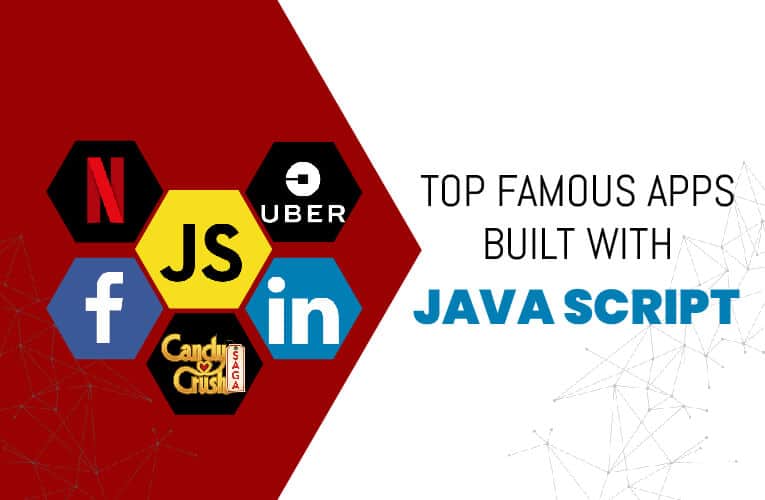You probably heard of JavaScript, even if you’re not a software or a web designer yourself, mostly because it is all-encompassing. One of the main uses of this common programming language is to interactively render web pages, but it can do so more now.
Many well-known companies depend on JavaScript for the construction of their commonly used applications. Here’s an overview of just a few of the best apps that use this essential language — and why they depend on it.
Why JavaScript?
JavaScript was created in 1995 and is a high-level language that is open to experienced and beginner programmers alike and easy to use. It does not have a steep learning curve and can easily be implemented in one project, this is one of the reasons for its huge popularity.
With a graphical interface, people can understand and program in JavaScript without development experience. The language is also browser-independent, which translates into Chrome, Internet Explorer, Safari, and Mozilla Firefox through a variety of browsers. It’s fast, lightweight, and based on objects. And Java Script has a large community, infrastructure, and structures, including the commonly used React, due to its huge popularity.
JavaScript is the top language for the integration of graphical, interactive, complex elements into a web page or app. In reality, this is one of the most common front-end languages used for Web creation, mobile application development, corporate apps, UX and UI, etc.
Types of Apps Created with JavaScript
There are so many applications made with or using JavaScript that you can’t mention them all. Thus, we have compiled only some of the most popular examples of famous applications in categories such as social media and networking, gaming, entertainment, moving, and learning that use JavaScript well. Here are 10 types of Apps that can be created with JavaScript.
- WEBSITES
Ok, so that under ‘pretty evident’ you can file this one. JavaScript was developed in 1995 to add interactivity and actions to otherwise static websites. For this, it is still used. This is simple. That’s simple. Every remotely modern website uses some level of JavaScript. This one’s a gimme.
- WEB APPLICATIONS
As browsers and personal computers have continuously improved, so can web applications be strong. Only think about Google Maps applications. All you need to do is click and drag on the mouse to explore a map in Google Maps. You can see a less accurate portion of the map that fills in. That’s the job behind the scenes of JavaScript.
- PRESENTATIONS
The development of presentations as websites is very common for JavaScript. Who wants a keynote and Powerpoint? It is quick to use the RevealJS library if you know HTML and CSS already. You can use slides.com, which uses RevealJS to build a web-based slide deck for you if you are not familiar with these resources.
- SERVER APPLICATIONS
JavaScript found its way from and to the browser with the introduction of NodeJS just a couple of years ago. Since then, Node has been a vital part of their back-end infrastructure through numerous big corporations including Wal-Mart.
- WEB SERVERS
When we are dealing with server apps. Did you see Node’s application Hello World? Building a Web server in approximately ten codes is fast. Naturally, with the node or the standard server application system expressJS you can build even more powerful servers. Many of the above-mentioned node applications are constructed using the MEAN Stack (Mongo, Express, Angular, Node), the main component of which is Express.
- GAMES
While in the past the browser was not a conventional game site, recently it became a robust venue for games. Also, the level of complexity possible in browser-based games has increased exponentially with the addition of HTML5 canvas (more in a second). Browser games also show you how to program!
- ART
The canvas function, which enables your browser to make three-dimensional forms, is one of the latest features in the HTML5 design. This opened the browser to digital art projects as a new medium.
- SMARTWATCH APPS
Pebble.js, which is a popular smartwatch producer, is a little javascript framework that enables a developer to build the Pebble watch line application in JavaScript. However, the Pebble portion of the market share is relatively thin. How about developing for iOS or Android.
- MOBILE APPS
One of JavaScript’s most powerful stuff is building applications for non-web contexts. This is an excellent way to suggest that you can create applications for items not on the web. Mobile devices, for example, are now the most common means of Internet access. This means that ALL of your websites must react (but that could be another blog post). It also means that mobile apps are just as essential a product for digital products as a web property. The main thing is that mobile applications are available in two main ways: Apple and Android.
And these applications are written in two different languages. But you have to design and maintain a product for mobile devices plus the web three times as many developers.
10. FLYING ROBOTS
Yes, that’s right, you read that. Various commercially available quadcopters come with a straightforward OS that allows NodeJS to be installed. This means you can use JavaScript to program a flying robot.
As is likely very obvious, the Law of Atwood remains accurate but not wrong. The most available programming language on the planet remains JavaScript. So it is good to see that a wide range of projects can be developed.
The development of JavaScript requires investment in the development of companies involved in creating mobile apps. This is because a JavaScript framework was used for some of the most common smartphone and web apps in today’s world. However, both mobile operating systems can be difficult to secure the kind of skills required to build a native application at a fair price. That’s why many businesses have turned to development services for JavaScript for assistance.
These external companies have several years of JavaScript experience to create the kind of popular native applications that customers want. JavaScript production is used by companies of all sizes to get goods to market quickly and without compromising long-term flexibility.
Read how companies such as Netflix, Facebook, and Uber used JavaScript to create many of the most popular applications worldwide. Here are five examples of well-known JavaScript applications.
Netflix
Netflix quickly became one of the biggest media companies in the world from a video rental company.
Originally, it was founded in 1997 as a local DVD subscription service. Netflix currently has over 148 million users worldwide and is the world’s most popular video streaming service.
Furthermore, the company went on to produce media. Over the past five years, Netflix has produced several hundred original films and TV shows. Series such as House of Cards and Stranger Things gave the business a very necessary reputation as a producer of content.

The development team switched to Node.js in 2014 when the company was able to update its online streaming platform. The JavaScript library was already renowned as a simple, widely applicable application.
Earlier, the company used server-side Java and front-end JavaScript. A huge program running Groovy scripts handled the back-end. This has prompted developers to speak two different programming languages fluently. This problem has been removed by Node.js.
The developer has minimized their workload and improved the consistency of the final web application using the same JavaScript framework on the front and back ends. Netflix reduces its development time and speed of its application by using different APIs written in Node.js.
As a result of quicker loading times and intuitive previews, the company also saw an enhanced user experience. Node.js uses an event loop and a non-blocking asynchronous I/O to easily handle ten thousand requests each second. This greatly decreased latency, which caused Netflix services to be thrown away before the turn.
Candy Crush
One of the most famous video games of all time is Candy Crush Saga. The free-to-play puzzle game first appeared in 2012 as a Facebook Web app before it was updated for Windows, Android, and iOS.
One of the first successful freemium games was Candy Crush. It means the game can be played free of charge, even though buys on the game can help players advance quicker or buy add-ons. In 2018, the King Digital Entertainment Corporation behind Candy Crush earned over $4 million per day.

Candy Crush Saga with JavaScript programming language has been developed by King Digital Entertainment. The flexibility of the platform allows developers to build a mobile app that looked and felt like a web application from Facebook.
Candy Crush has also used the React Native Javascript framework of Facebook to connect the mobile game with the web application of Facebook. Users have therefore been able to invite friends and associate scores with their social networks. This feature helped to make this game so popular and allowed users to download it afterward.
Mobile gaming has changed from effective Candy Crush modeling. JavaScript was used to build similar high-success games for applications as Bejeweled and Zookeeper Fight. Wait for JavaScript as its comprehensive structures and strong applicability to continue to dominate the mobile gamer market.
Facebook remains one of the JavaScript software library’s most significant business supports. Facebook developed and released the influential JavaScript React Native framework in 2015, which has grown tremendously in the meantime.
React Native has been developed to resolve a big problem with mobile apps on Facebook. Companies may develop cross-platform development for mobile apps on different operating systems.

However, because the code is generalized for several different operating systems, each computer also has an unnatural user interface and experience design.
Mark Zuckerberg famously said in 2012 that “The biggest mistake we made as a company was betting too much on HTML as opposed to native.”
Facebook has developed a response indigenous to the challenge of user design. While initially developed for iOS, it is now also used for Android and Windows 10 projects.
To build the existing mobile apps for both iOS and Android, the development team used React Native. Both mobile apps have been developed with one JavaScript language by the same development team, so they share similar functionalities and work with intuition.
User experience with Facebook has been enhanced with the use of native applications. Effects now load twice as fast on the user dashboard and the app has fewer bugs than before. Facebook users enjoy their new native applications and enhanced user interface.
Uber
Since its founding in 2009, the mobile ride-sharing company Uber has evolved smoothly. Although the business was initially launched in San Francisco with limited transport services, its services in 173 countries worldwide are now operational.
The app works by connecting consumers with drivers, who ferry users to their destination with their vehicles. With just a single button on your mobile, customers can hail a driver.
When it came time for the company to release a new mobile version and to upgrade its corresponding system, for the following reasons they switched to Node.js:

- It can rapidly process a great deal of knowledge. This is ideal for applications that have to deal with many network applications.
- It is ideal for fast iterations. It is possible to monitor the code and fix errors on the fly.
- The architecture must be open-sourced. This results in continuous changes and ensures that the language develops according to the needs of users.
Several enhancements were made in comparison to the previous version by the latest mobile application. Firstly, the performance of the matching scheme has been greatly improved.
Also, more than 2 million remote calls can now be processed per second by Uber. JavaScript has performed wonderfully with the innovative ride-sharing service of Uber and is now helping other businesses to innovate.
LinkedIn is by far the world’s most popular social and networking professional website. The platform allows white-collar employees to build a professional network and to seek job opportunities with over 600 million members worldwide.
When the enterprise tried to release an upgraded mobile application in 2012, both front and back ends were turned to JavaScript. The development team of LinkedIn was able to build a well-developed application with an impressive user interface through the use of a combination of HTML and native JavaScript code.

JavaScript has also had an important influence on the success of mobile LinkedIn applications. In 2012, Ars Technica conducted a thorough review of the growth of the LinkedIn mobile app. Node.js enhanced the performance of the framework in a variety of areas, the website states.
Compared to Ruby on Rails, Node.js improved performance and memory use. In reality, the request has in some cases been 20 times faster. More surprisingly, total smartphone use rose 23 percent after the release of the new app.
The production team also took advantage of the JavaScript turn. A single group could now conduct the front-end and back-end growth. This saved the company’s money, helped it to improve its consistency, and reduced the servers from 30 to 3.
Conclusion
JavaScript has been by far the most common language for the production of mobile applications over the last decade. Their early adoption led to their adoption by technology giants as Facebook and Netflix and the creation of JavaScript outsourcing companies which help these companies to grow.












Thanks for sharing this useful blog.